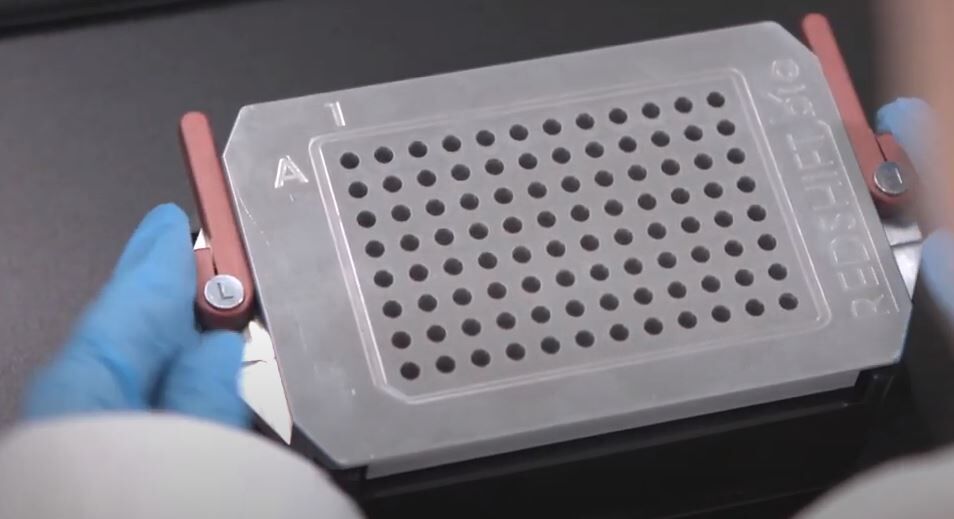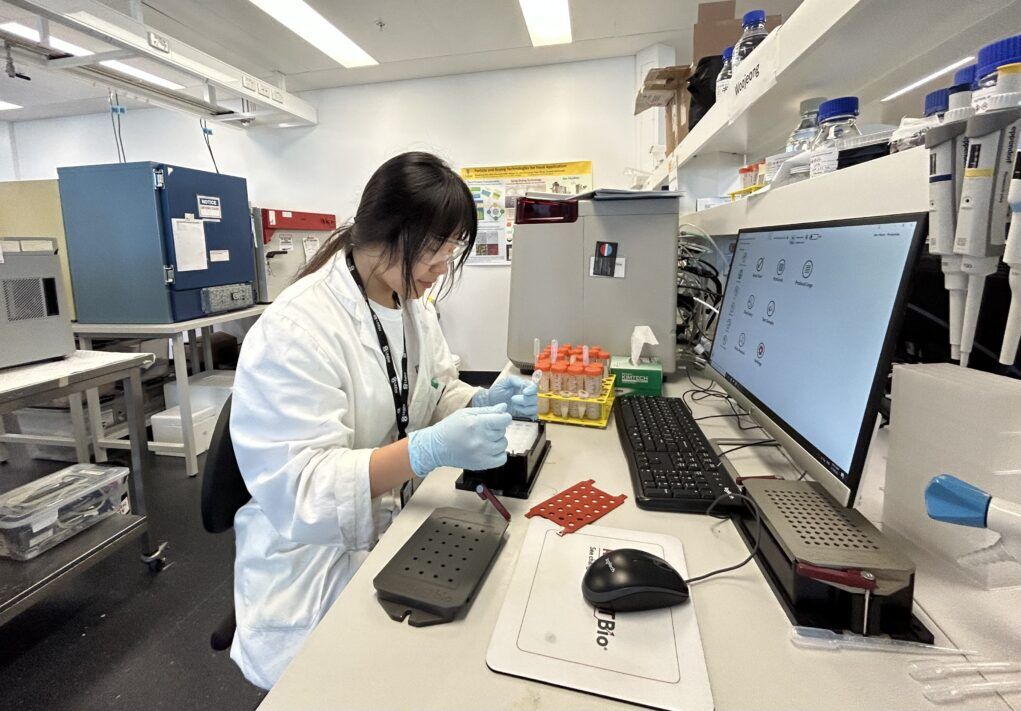RedShiftBio AQS3PRO
The RedShiftBio AQS3pro uses Microfluidic Modulation Spectroscopy (MMS) to measure protein structure, stability, aggregation, concentration and protein structural similarity.









RedShiftBio AQS3PRO
The RedShiftBio AQS3pro uses Microfluidic Modulation Spectroscopy (MMS) to measure protein structure, stability, aggregation, concentration and protein structural similarity.
| Manufacturer | RedShiftBio |
|---|---|
| Product Series | AQS3Pro |
| Measurement principle | Microfluidic Modulation Spectroscopy (MMS) |
| Application | Protein Conformation |
| Sample type | Proteins and peptides |
| Concentration Range | 0.1 to >200 mg/mL |
| Automation | Custom 24-well and 96-well plate formats |
| Optical detector | Quantum Cascade Laser (1590 - 1710 cm-1) |
Product Overview
The RedShiftBio AQS3pro is a new analytical technique that enables direct probing of the biophysical structure of proteins. It provides comprehensive secondary structure information, in a single automated analysis, across five key measurements – protein aggregation, quantitation, stability, similarity, structure – replacing the requirement to run samples on multiple instruments. The AQS3pro directly supports protein characterisation throughout the biopharmaceutical development pipeline by strengthening bioanalytical analysis and provide new insights into protein based pharmaceutical drug development.
The AQS3pro allows users to ‘see change’ in the secondary structure of proteins across a wide concentration range from 0.1mg/mL to over 200 mg/mL, and in the presence of excipients – the concentration range found across the full spectrum of drug development. Samples can be measured with minimal preparation and without dilution to generate data that is reliably representative of drug performance.
The patented Microfluidic Modulation Spectroscopy (MMS) technology combines mid-infrared laser spectroscopy with microfluidics, built-in real time referencing and advanced signal processing to provide high sensitivity measurements with no buffer interference. The tunable laser in the secondary structure analysis tools, probes the protein solution through a microfluidic cell. The microfluidic cell fluids rapidly alternate between sample and reference (buffer) streams to continuously and automatically perform background subtraction, dramatically improving measurement precision, accuracy, and signal-to-noise.
The AQS3delta analytical software automates processing of the resulting data, presenting it in a format that elucidates protein behaviour and streamlines information flow. Contact us or Download the latest eBook for more information.
- Demonstration video
- Benefits
- Applications
- CUSTOMER TESTIMONIAL
Demonstration video
Benefits
- Understand protein behaviour with 5 key measurements – aggregation, quantitation, stability, structure and similarity
- Widest concentration range, from 0.1 to over 200mg/mL, to characterise biotherapeutics
- Automated multi-sample analysis for walk away operation
- Compatible with almost all buffers and additives; no more labelling, adulteration or dialysis
- High sensitivity and precision to detect even the smallest of changes in protein secondary structure with outstanding repeatability and reproducibility
- Analytical software that easily transitions data into insight
Applications
- Aggregation – This is a common indicator of protein instability, which can result in a therapeutic product being unfit for launch. MMS is one of the only techniques which can directly monitor the formation of aggregates due to its ability to measure intermolecular beta-sheet structures.
- Quantitation of protein concentration – The structure and behavior of proteins in solution can be a function of their concentration, therefore the ability to accurately quantify protein concentration allows better comparison between different proteins and formulations. MMS’s high resolution (<0.001 cm-1) and low stray light susceptibility increases the linear concentration range for the measurement by more than 2 orders of magnitude. With a minimum measurable concentration of less than 10 μg/mL and an upper limit of greater than 200 mg/mL, this technique offers a significant improvement over conventional absorbance-based assays.
- Protein Higher Order Structure (HOS) – During manufacturing, biopharmaceutical proteins may undergo conformational changes which can alter their secondary structure and therefore their function. MMS has the ability to detect these changes with great sensitivity, in the formulation buffer and at the concentration of interest, without the need for dilution or deuteration. MMS offers detailed information on which structural motifs in the protein molecule are changing, to help guide the development of more stable protein molecules and formulations.
- Protein Stability – Measuring how stable a protein is to thermal or chemical exposure during manufacturing and storage is critical. Structural changes can lead to decreases in potency, degradation of the product, and increases in impurities and aggregates which can be extremely harmful. MMS technology enables the accurate assessment of the stability of the protein throughout the entire formulation, development, and manufacturing process, reducing risks and enabling control strategies for each critical quality attribute (CQA).
- Biosimilarity – Along with functional comparisons, measurement and analysis of the structural similarity between proteins is an effective method of demonstrating bioequivalence. MMS measures protein secondary structure, reveals very small conformation differences between different proteins, and provides information as to where those differences occur. These capabilities make MMS a powerful tool in the analysis and development of biosimilars.
CUSTOMER TESTIMONIAL

REVOLUTIONISING PROTEIN STRUCTURAL ANALYSIS: THE REDSHIFTBIO MMS TECHNIQUE
“I was very lucky to have access to MMS technology during my PhD,” Kim said. “It addressed the limitations of traditional protein structural analysis techniques with its accuracy and the ability to measure a wide range of protein concentrations and has enabled the precise characterisation of complex food formulations, particularly those involving plant proteins.” Read full article here https://bit.ly/45jmoJq
Product Enquiry
SPEAK TO OUR AUSTRALIAN AND NEW ZEALAND TEAM
If you would like to enquire about this product, fill out this form and one of our product specialists will contact you shortly.
If you need help in the operation or repair of an instrument then please contact the Customer Help Centre directly.
Please note, product enquiries are only applicable to Australia, New Zealand, Papua New Guinea and Fiji
Or call us instead at (02) 9541 3500




 02 9541 3500
02 9541 3500

